Introduction
Spring is a magical season that transforms mundane backyards into vibrant displays of color and life. As the world wakes from the slumber of winter, the allure of gardening captures the hearts of many, promising a rewarding hobby and an opportunity to connect with nature. For those new to the world of horticulture or those with a busy lifestyle, choosing easy-to-care-for plants is key to enjoying a flourishing garden without the stress of constant upkeep.

In this blog post, we will delve into the numerous benefits of selecting easy plants for your spring gardening endeavors, share insightful tips on choosing the right plants, and provide a list of our top picks available at Plantology. By the end, you'll be equipped with the knowledge and inspiration to cultivate a beautiful and manageable garden.
Benefits of Spring Gardening with Easy Plants
Stress Relief and Mental Health Improvement
Gardening is known for its therapeutic effects, and incorporating easy plants into your spring garden can make the activity even more enjoyable rather than stressful. The process of planting, nurturing, and watching your garden flourish provides a sense of accomplishment and can significantly enhance your mental well-being. Particularly for those with high-stress jobs or busy home lives, tending to low-maintenance plants can offer a much-needed respite and a chance to unwind.
Low-Maintenance Options for Busy Lifestyles
In today's fast-paced world, many people find it challenging to dedicate large amounts of time to gardening. Easy plants cater to these individuals by requiring minimal attention while still providing aesthetic beauty and natural wellness benefits. By selecting plants known for their resilience and low maintenance, you can enjoy a thriving garden that fits seamlessly into your lifestyle.
Cost-Effectiveness and Sustainability
Opting for easy-to-care-for plants can also be a cost-effective strategy. These plants generally require less in terms of ongoing expenses like fertilizers and pest control products, making them budget-friendly choices for the cost-conscious gardener. Furthermore, many of these plants are well-suited to sustainable gardening practices, including efficient water use and reduced need for chemical interventions, which can contribute positively to environmental preservation.

Understanding What Makes a Plant Easy to Grow
Resilience to Various Climate Conditions
Choosing plants that can adapt to a range of temperatures and weather conditions is crucial when aiming for a low-maintenance garden. Resilient plants can withstand fluctuations in temperature and rainfall, which are common during spring, ensuring they remain healthy without constant intervention.
Disease and Pest Resistance
Another factor contributing to a plant's ease of care is its resistance to pests and diseases. Some plant species have developed natural defenses that can significantly reduce your need for chemical treatments and constant monitoring. By selecting disease-resistant varieties, your garden can remain lush and vibrant with less effort.
Simplicity in Care and Pruning Needs
Simplicity in maintenance is a desirable trait for easy plants. Opt for species that do not require frequent pruning or exceptional soil conditions. These plants can be left to their own devices more often than not, freeing up your time while still delivering impressive garden displays.
Top Easy Plants for Spring Gardening
Adonidia Palm
The Adonidia Palm, also known as the Christmas Palm, is a popular choice for an easy-care tropical plant. With its attractive appearance and minimal maintenance requirements, it's perfect for those looking to create a tropical oasis. Adonidia Palms can be purchased in single, double, or triple varieties to suit your garden's specific needs. These palms are highly tolerant of various soil types and do not require frequent watering, making them an ideal choice for spring planting.

Agapanthus (Lily of the Nile)
Known for its stunning blue flowers, the Agapanthus is a hardy perennial that thrives in varying climates. It's drought-resistant, making it a great option for those who want a beautiful yet easy-to-maintain flowering plant. Its long blooming period throughout the spring and summer makes it an excellent addition to any garden. Discover the Agapanthus Lily of the Nile Blue at Plantology.
Agave Varieties
Agave plants are renowned for their rugged nature and striking architectural forms. Several varieties, such as the Agave Blue, Caribbean Agave, and Desmettiana Variegata, can serve as the focal point in a modern garden design. Agaves require infrequent watering and are resistant to most pests, which makes them a staple for easy spring gardening.
Aglaonema (Silver Bay)
Aglaonema, or Chinese Evergreen, is another plant known for its low maintenance needs and robust nature. The Aglaonema Silver Bay variety boasts beautiful silver and green foliage, adding a touch of elegance to any indoor or shaded garden area. These plants are tolerant of low light conditions and require infrequent watering, allowing them to thrive with minimal effort.
Alexander Palm
The Alexander Palm is a slender, graceful plant that adapts well to a range of environmental conditions. It’s an ideal choice for creating shade and adding vertical interest to gardens. This palm is quite hardy and can tolerate less-than-perfect growing conditions without losing its charm. Check out the Alexander Palm available at Plantology for a sophisticated addition to your garden.

Tips for Planting and Caring for Easy Plants
Proper Site Selection and Preparation
Before planting, it's crucial to choose the right location for each plant, considering its specific light, soil, and water needs. Assess your garden's conditions and amend the soil if necessary to provide the best environment for your plants to thrive. Ensuring correct placement can drastically reduce maintenance needs and prevent common issues like pests and diseases.
Efficient Watering Techniques
Establish a watering routine that caters to each plant's needs while also being mindful of water conservation. Grouping plants with similar water requirements together can reduce waste and increase their likelihood of flourishing. Consider using drip irrigation systems for more precise and efficient watering.
Using Mulch for Moisture Retention and Weed Control
Mulching not only helps retain soil moisture but also suppresses weed growth, reducing the overall maintenance workload. Organic mulches like shredded bark or straw decompose to provide additional nutrients to the soil, promoting healthier plant growth with minimal effort.
Monitoring for Pests and Diseases
While many easy plants are resistant to pests and diseases, it's still good practice to regularly inspect your garden. Early detection of any issues can prevent them from escalating. Employ natural remedies and companion planting techniques to enhance your garden’s resilience without resorting to chemicals.

Conclusion
Spring gardening with easy plants offers an ideal opportunity to dip your toes into the world of horticulture or enhance an already established garden without the added stress of high-maintenance flora. From the calming presence of an Adonidia Palm to the striking beauty of Agapanthus flowers, Plantology provides a range of options suited for any garden or lifestyle.
Whether you're a beginner or a seasoned gardener seeking simplicity, embracing low-maintenance plants brings not only personal satisfaction but also a chance to contribute positively to your environment. Ready to transform your garden this spring? Explore our extensive selection of easy-to-care-for plants and let your garden flourish effortlessly.
Visit Plantology today to explore our range of easy trees and plants perfect for your spring garden rejuvenation.
Diving Deeper into Easy-to-Care-For Plant Varieties
Calathea Plants
Calathea plants are celebrated for their stunning leaf patterns, often resembling a canvas painted with intricate lines and contrasting colors. Known as "prayer plants" due to their diurnal leaf movements, Calatheas are perfect for adding dynamic, visual interest to your indoor spaces. These plants can thrive in indirect light, making them suitable for rooms away from direct sunlight. Their minimal care requirements include maintaining slightly moist soil and avoiding drafts, allowing you to enjoy their beauty without excessive effort. Explore the Calathea collection on Plantology.

Sedum (Stonecrop)
For those seeking a groundcover plant that requires little maintenance, Sedum is an excellent choice. These succulents are extremely resilient and can thrive in nutrient-poor soils, drought, and neglect. Available in a variety of colors and forms, Sedums add texture and color to any landscape design. Consider them for rock gardens, living roofs, or as fillers between stones in a path. They require almost no watering once established and only minimal feeding, making them one of the most hands-off plant varieties available. Check out the Sedum selections at Plantology.
Liriope (Monkey Grass)
Liriope, commonly known as monkey grass, is a versatile plant suited for ground cover or subtle borders in your garden. Its grass-like appearance and spikes of lavender flowers offer an aesthetic appeal from spring through fall. Liriope can tolerate a wide range of soil types and light conditions, although it flourishes in moist, well-drained environments. This hardy perennial requires very little maintenance and can be an attractive option for those seeking beauty without effort. Discover more about the Liriope collection at Plantology.
Zamioculcas zamiifolia (ZZ Plant)
The ZZ Plant stands out for its glossy, dark green leaves that radiate a sense of calm and well-being. Known for its ability to adapt to low-light conditions and drought, it’s an ideal choice for busy individuals or less sunny areas of your home. This plant can survive weeks without water, making it one of the easiest houseplants to care for. It’s also credited with air-purifying properties, contributing to a healthier indoor environment. Find the ZZ Plant at Plantology, the perfect addition to a low-maintenance plant repertoire.

Ficus Elastica (Rubber Plant)
The Rubber Plant is an all-time favorite for indoor gardening enthusiasts. Its shiny, large leaves can be a bold statement piece in your home. Ficus elastica thrives under indirect sunlight and prefers to dry out between waterings, which means less frequent attention is needed. It tolerates a variety of indoor conditions, making it a robust yet decorative option for your plant collection. Learn more about the Rubber Plant from Plantology.
Best Practices for Maximizing Your Garden's Potential
Implementing Companion Planting
Companion planting is a gardening method where different species are planted close to each other to promote mutual benefits. By understanding the synergy between certain plants, you can reduce pest infestation naturally and enhance overall plant growth. For example, marigolds are known to repel nematodes and can be planted among vegetables or other ornamentals to minimize pest issues. Similarly, herbs like basil and dill can help deter specific insects while attracting beneficial predators. This natural approach reduces the need for chemicals and supports a more organic garden.
Seasonal Planning for Year-Round Enjoyment
Embrace the concept of seasonal planting to ensure your garden remains vibrant throughout the year. Understanding the growth cycle and blooming times of various species enables you to plan your garden layout effectively. During spring, focus on planting perennials and bulbs that will provide early color and establish themselves for years to come. As summer approaches, you can fill in spaces with annuals for an additional burst of color. This strategic method not only keeps your garden lively but also simplifies maintenance by having different plants peaking at different times.

Nurturing Soil Health and Fertility
Healthy soil is the backbone of any thriving garden. Regularly test your soil to understand its pH and nutrient levels. Use organic compost and well-rotted manure to enhance soil structure and fertility. Incorporate crop rotation and cover crops in your vegetable patches to prevent nutrient depletion and soil compaction. By nurturing the soil's ecosystem, you create an environment that supports robust plant growth and reduces reliance on synthetic fertilizers.
Exploring Eco-Friendly Gardening Practices
Water Conservation Techniques
Adopting water conservation techniques is crucial for sustainable gardening. Beyond efficient watering systems like drip irrigation, consider rainwater harvesting. Using rain barrels or cisterns to collect rainwater can significantly reduce your reliance on municipal water supplies. Additionally, xeriscaping, which involves designing landscapes to reduce or eliminate the need for irrigation, can be particularly effective in arid climates.
Promoting Biodiversity
Encourage biodiversity in your garden by introducing native plants and supporting local wildlife. Native plants often require less watering and are more resistant to pests and diseases due to their adaptation to local conditions. Incorporating a variety of species attracts diverse pollinators, birds, and conservation-friendly creatures, contributing to a balanced ecosystem that minimizes ecological issues such as pest outbreaks.

Composting and Waste Reduction
Composting is an excellent way to reduce kitchen and garden waste while producing rich, organic fertilizer for your plants. By composting organic matter like fruit and vegetable scraps, coffee grounds, and leaves, you reduce landfill contributions and enrich your garden's soil. This sustainable practice not only enhances soil fertility but also decreases the carbon footprint associated with buying commercial fertilizers.
Conclusion: Embrace a Low-Maintenance Garden Lifestyle
By choosing easy-to-care-for plants and adopting sustainable gardening practices, you set the stage for a garden that provides beauty, tranquility, and ecological benefits without demanding constant attention. Whether you're growing a verdant haven of indoor plants or cultivating an outdoor oasis, the options featured here offer endless potential for a fulfilling gardening experience.
Ready to transform your garden? Visit Plantology for an extensive range of easy-care plants suitable for your needs and join the movement towards a more enjoyable and sustainable gardening future.

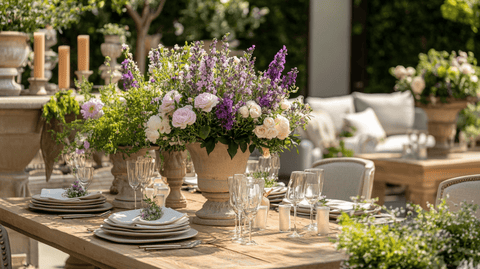











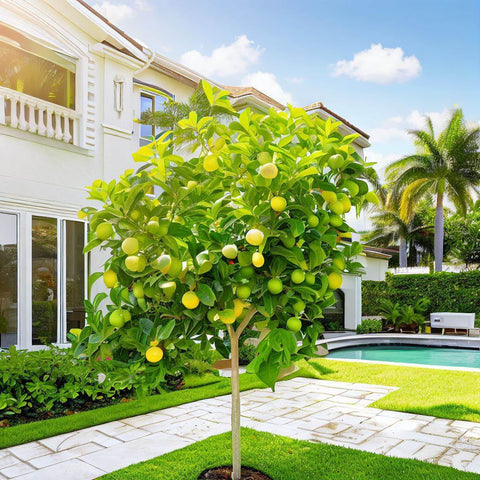



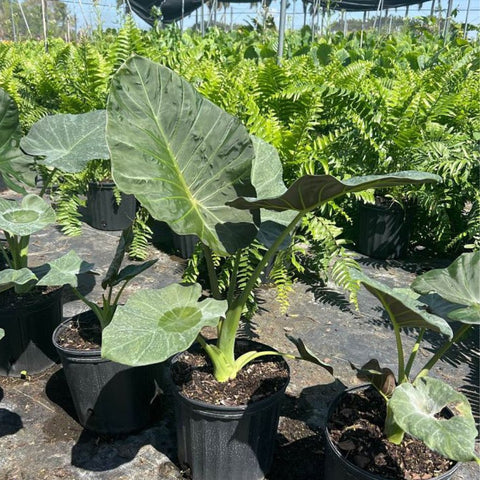
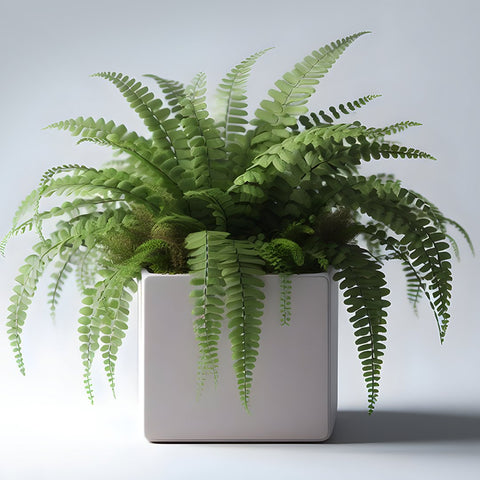
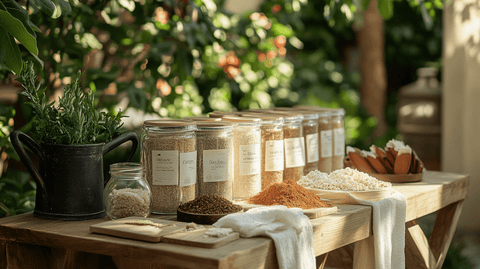
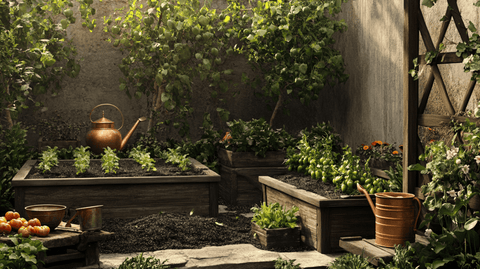









Comments (0)
There are no comments for this article. Be the first one to leave a message!